In 2013, the African Union unveiled the African Integrated High-Speed Railway Network (AIHSRN), a flagship project led by the African Union as part of its Agenda 2063 – a 50-year development trajectory which also includes a continental free trade zone, a common passport, and an end to armed conflict.
In the decade since its introduction, African nations have planned and initiated a number of high-speed rail systems in an effort to connect vital routes on the continent.
When Africa’s pioneering railroads opened in the 1850s, with the Cairo-Alexandria line in 1856, the Cape Town-Port Elizabeth line in 1876 and the Dakar-Saint Louis line in 1885, rail seemed poised to open a new era for steam transport on the continent.
While rail has been a cornerstone of development planning across the continent ever since, outside of South Africa and a few key lines, including the Tanzam railway, only a few of the grand plans for rail have come to fruition. However, modern high-speed rail systems are seen as playing a crucial role in enhancing connectivity and economic growth across Africa.
Here, we explore the top ten fastest high-speed rail systems in Africa, including both operational and upcoming projects, highlighting their potential to transform transportation on the continent.
Nigeria – Red Line Metro from Agbado to Oyingbo in Lagos State, top speed 330 km/hour
Nigerian President Bola Tinubu inaugurated the 37-kilometre Red Line rail system in Lagos on 29th February 2024. The project’s first phase runs from Agbado in Ogun State to Oyingbo in the heart of Lagos and is just a part of one of Africa’s largest urban infrastructure projects. When fully operational, the train is expected to run 37 trips daily, carrying approximately 500,000 passengers.

Morocco – Al Boraq, runs from Casablanca to Tangier, top speed 320 km/hour
The Al Boraq was inaugurated in 2018 and was then Africa’s first bullet train. The line, operated by Moroccan national operator ONCF, connects Casablanca and Tangier (337.8 km). It features a newly constructed high-speed section from Tangier to Kenitra and an upgraded line from Kenitra to Casablanca. The line uses 12 Alstom Avelia Euroduplex train sets, capable of speeds of up to 320 km/h on its high-speed track.
These trains have a capacity of 533 passengers and consist of two power cars and eight passenger cars. The US$2bn project has significantly reduced travel time between Casablanca and Rabat from nearly five hours to just over two hours, with trains reaching a peak speed of 357 km/h during testing.
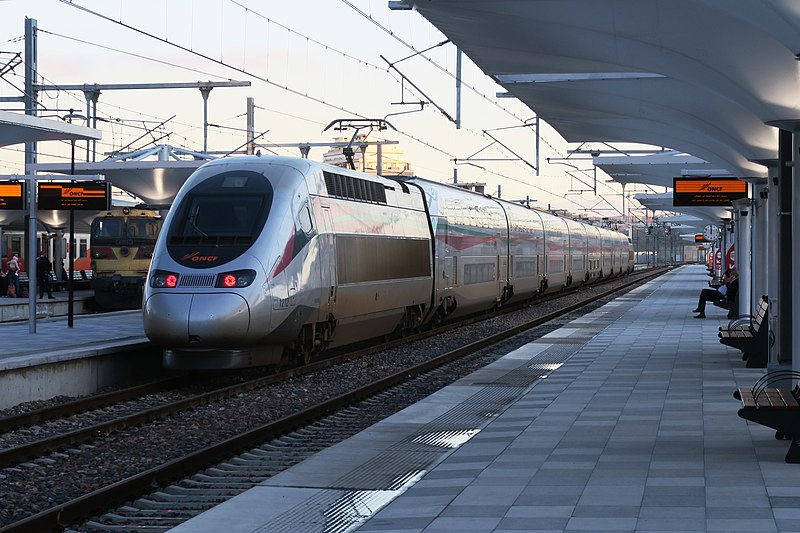
Egypt – High-speed rail network linking the Mediterranean and Red Sea coasts, top speed 250 km/hour
Egypt signed a US$4.45 billion deal with Siemens to construct a high-speed rail system linking its Mediterranean and Red Sea coasts. The new rail line, spanning 1800 km, will accommodate trains travelling at speeds up to 250 km/hr. It will replace the existing Cairo metro trains that operate at 100km/hr. In addition to the freight line, it’s designed to carry more than 30 million passengers annually.
South Africa – The Gautrain speed rail system linking Johannesburg, Pretoria, Ekurhuleni and O.R. Tambo International Airport top speed 160 km/hour
The Gautrain began as an 80-kilometre high-speed express commuter rail system in Gauteng, South Africa. Its first operation was on 8 June 2010 between Sandton and O. R. Tambo International Airport, just in time for the 2010 FIFA World Cup.
According to Global Infrastructure Hub, the public-private partnership project for the high-speed rail system cost R31.8 billion (some US$1.7 billion), and a comprehensive plan for route extensions has been submitted that could transform urban transport in one of Africa’s richest cities.
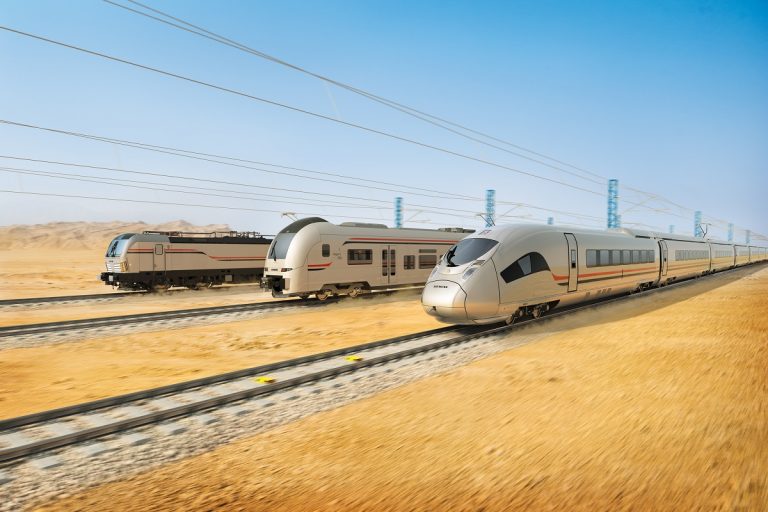
Algeria – El Ksar-Hai Nasr Light Rail Line, 160 km/hour
The Coradia Polyvalent trains in Algeria, unveiled in March 2018, feature both diesel and electric 25 kV capacities, making them mainline dual-mode trains.
These trains can reach speeds of up to 160 km/hr. According to Global Railway Review, the 110-metre-long trains can accommodate 254 passengers, with 60 seats designated for first class. These trains are adapted to Algeria’s climatic conditions, including sand and high temperatures, and have a highly efficient air conditioning system.
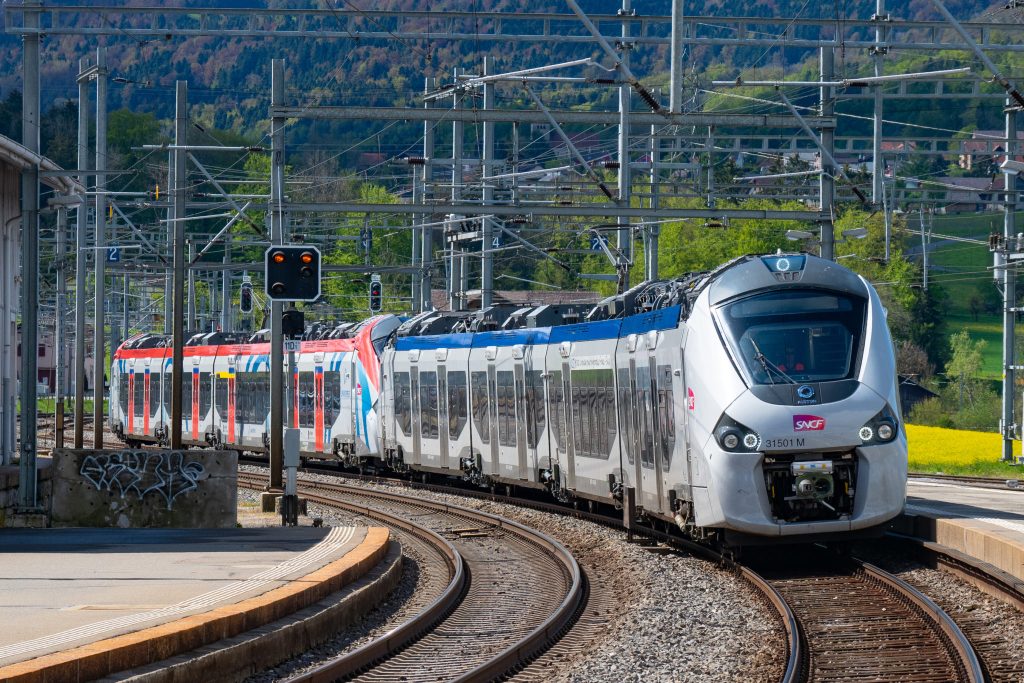
Senegal – Regional Express Train (RET), 160 km/hour
The RET features state-of-the-art “dual-mode” technology, utilising both electrical and thermal energy. This approach allows the trains to reach high speeds. The first phase, connecting Dakar to Diamniadio over 36 kilometres, was inaugurated on December 27, 2021.
According to Railway Technology, the Dakar Regional Express Train was constructed in two phases and features 14 stations and two maintenance sites. The US$1.14 billion line links the Blaise Diagne International Airport (AIBD) with Dakar’s metropolitan centre. As part of the ‘Emerging Senegal 2035’ project, these trains are designed to alleviate traffic congestion in Dakar.
Ethiopia -Djibouti – Addis-Ababa-Djibouti Railway, 160 km/hour
The Addis Ababa–Djibouti Railway is a standard gauge international railway that serves as the backbone of the new Ethiopian National Railway Network. It was inaugurated on January 1, 2018, by then-Prime Minister Hailemariam Desalegn.
This railway connects Ethiopia’s capital, Addis Ababa, with Djibouti and its Port of Doraleh. Notably, it provides landlocked Ethiopia with access to the sea, facilitating trade. Passenger trains on this line can reach speeds of 160 km/h, while cargo trains operate at 120 km/h.
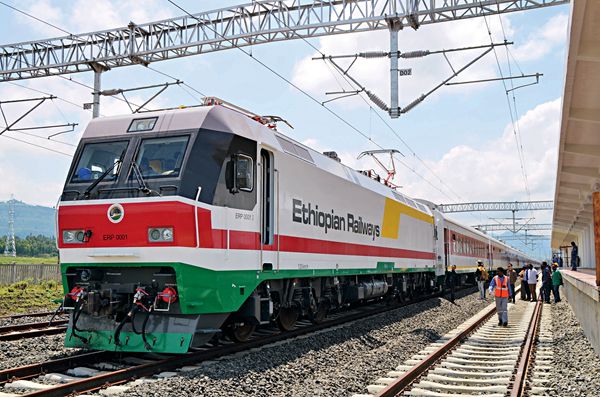
Tanzania – Standard Gauge Railway Bullet Train, 160 km/hour
Tanzania has recently made significant strides in its railway modernisation efforts by acquiring two new electric multiple-unit (EMU) trains from South Korea. These state-of-the-art trains, each boasting eight carriages, will operate on the brand-new route connecting Dar es Salaam and Dodoma.
The service is scheduled to begin on July 25th, 2024, marking a significant upgrade for the Standard Gauge Railway (SGR) network. Two new electric trains joined the sole electric train, bringing the total to three trains, according to The Citizen, a local paper.
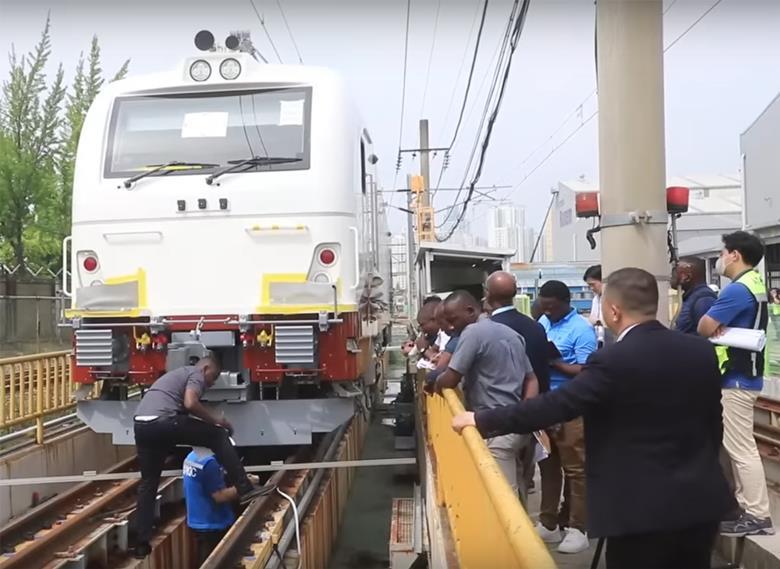
It is expected to be the fastest train in East Africa and will cost approximately US$2.2 billion.
Tunisia – Tunis Station to Bougatfa Station Rapid Rail Line, sections can run at 120 km/hour
Tunis Rapid Rail Network (RFR) Line E is Tunisia’s first electrified suburban railway. It was officially inaugurated in March 2023 and connects the main Tunis station (located in the city centre’s Place de Barcelone) to the suburban Bougatfa station.
The line spans 6.3 km and serves the southwestern districts of the capital. Intermediate stations include Saida Manoubia, Annajah, Etayaran, Ezzouhour, and Hrairia. Trains on Line E operate with a capacity of 2408 passengers per train and a frequency of one train every 7 minutes.
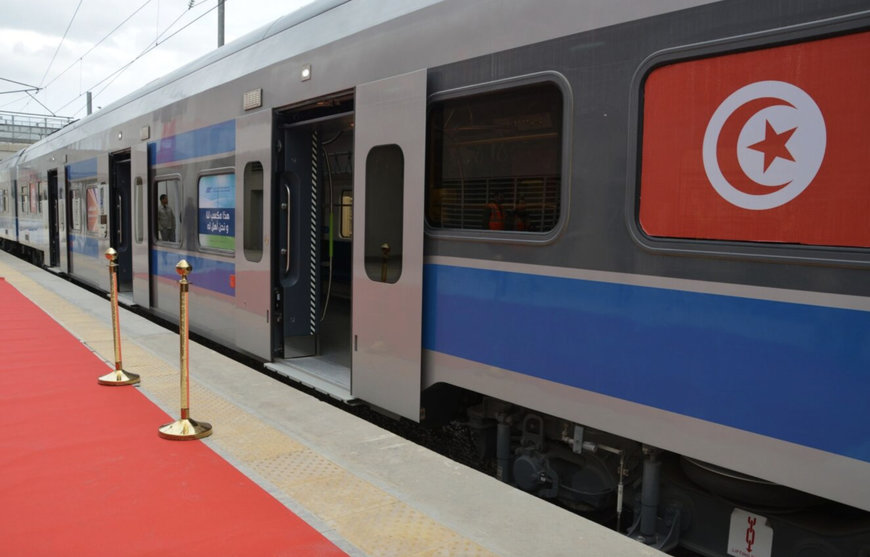
Kenya – Mombasa-Nairobi Standard Gauge Railway (SGR), 120 km/hour
The Madaraka Express operates from Nairobi to Mombasa, achieving a top speed of 120 km/hr. It offers two classes: first class and economy class. Ticket prices have increased, with first-class tickets rising from 3,000 to 4,500 Kenyan shillings (approximately US$23 to US$34) and economy-class tickets from 1,000 to 1,500 Kenyan shillings (about US$8 to US$11).
According to The East African, the Exim Bank of China-funded most of the US$3.2 billion (416.8 billion Kenyan shillings) for the SGR project.
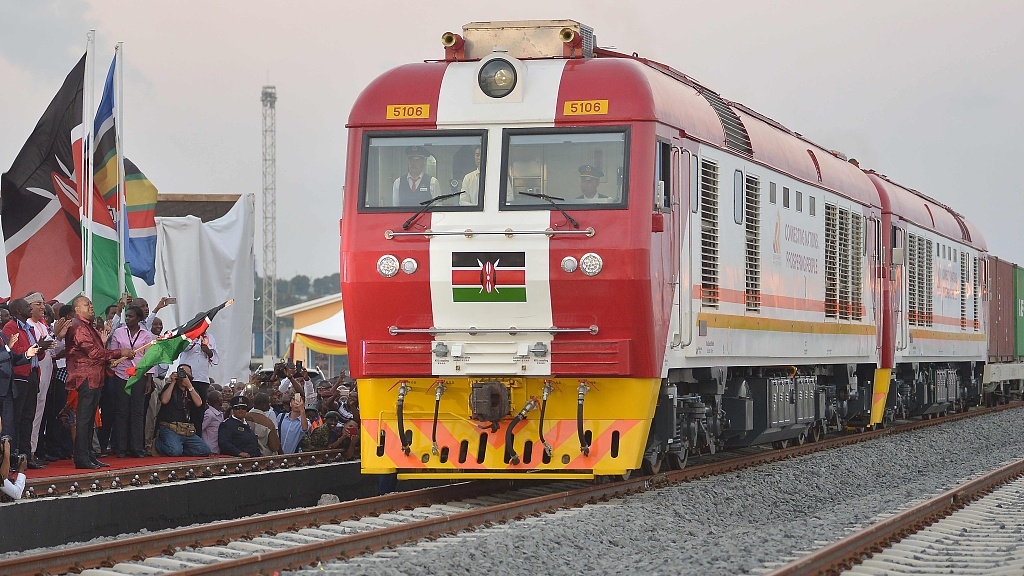
Credit: Esther Musembi and Fiske Nyirongo, Bird Story Agency


